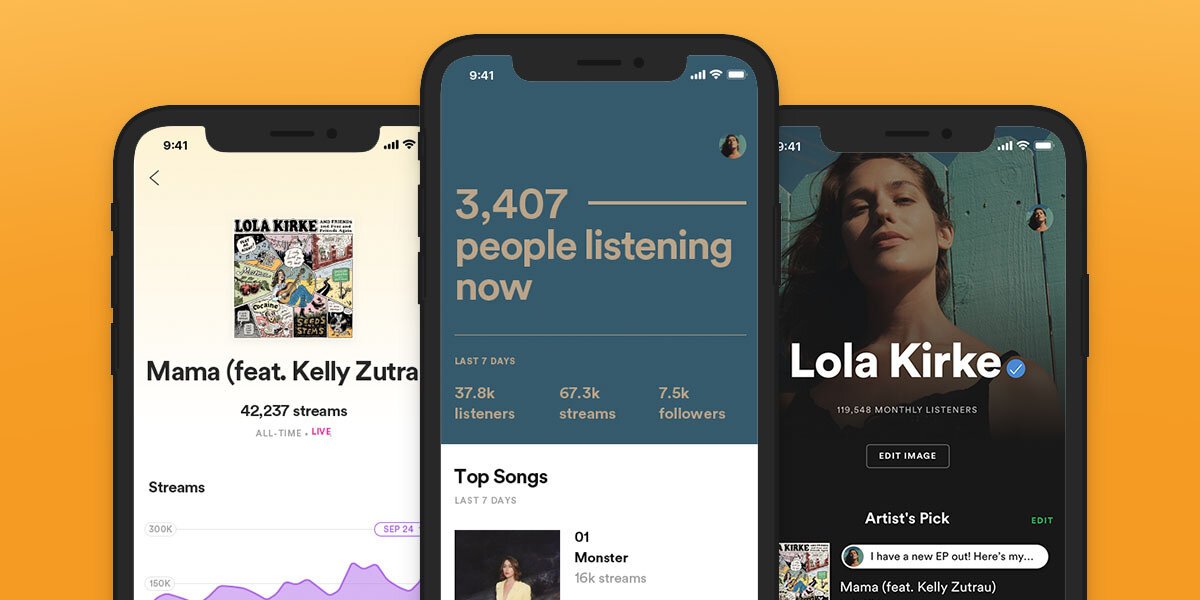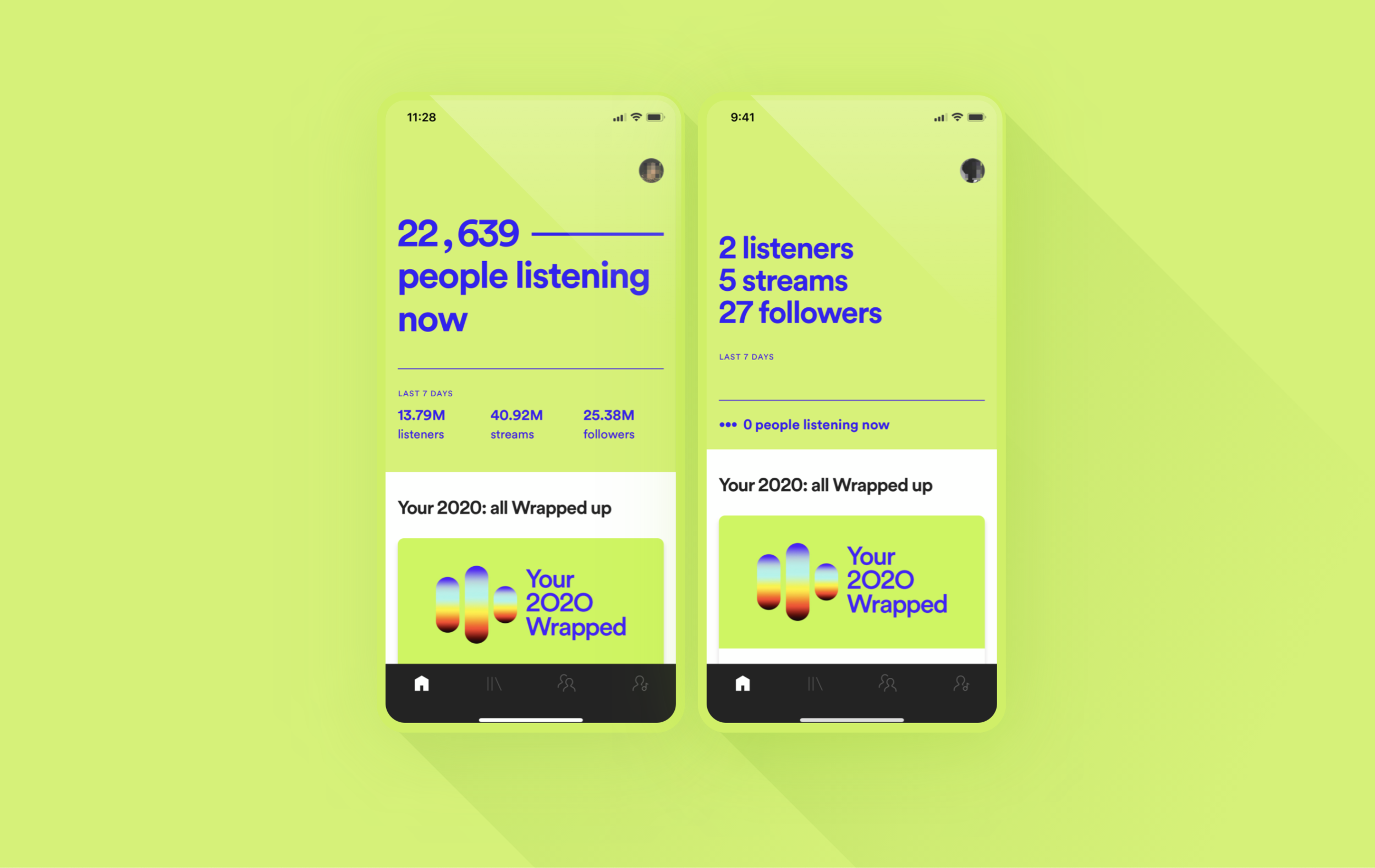
Making every experience unique
Spotify for Artists is the first product designed to help artists understand exactly how their music is performing on Spotify. Since its launch in 2016, it has become a necessary tool for the music industry at large.
Content design lead
The team was tasked with creating a new home experience for Spotify for Artists that would help orient artists within the data and bring the vibrancy of their music and artistic expression to life.
As the content design lead, I was responsible for working closely with fellow product designers to determine the hierarchy and overall user experience. Ultimately, I owned all the content, and therefore had the final say (along with the design director) for how the content was displayed in the redesign
My roles for this projectContext is king
While Spotify for Artists had become an indispensable tool for the industry, it was mostly just a glorified spreadsheet of numbers that often lacked context. Artists would open the app only to see a bunch of numbers. It needed a home experience that would ground users and help them navigate to content worth paying closer attention to.
Real-time data is incredibly valuable
In 2019, Spotify for Artists on desktop didn’t have parity with the Spotify for Artists mobile app. The one feature that kept people coming regularly to the website wasn’t available in the app. So when we were designing the new home experience, we knew we had to include it. But we also began to wonder if we should make it front and center. Why not give the people what they want?
During research sessions, we heard from many artists that their favorite part of Spotify for Artists is the “listening now” stat because it makes the coldness of the data feel more alive.
The solution seemed simple at first
The solution seemed relatively simple—just put the number front and center and everyone will be happy, right?
Not every artist has people listening to them at any given moment. In fact, most artists who use Spotify don’t have people listening to them all the time. And if they do, it’s a very small number.
Real-time data can also be depressing
Once we looked more closely at the numbers, we realized that the majority of artists who would open their Spotify for Artists app would see a giant zero greeting them. We knew we didn’t want to hide the stat —the facts are the facts—but we also felt strongly that a big zero wouldn’t feel good, no matter how true the data was.
This became a content hierarchy decision
Almost all artists have some data over the last 7 days. Rather than hiding reality, we chose to create a minimum threshold that would trigger a different version of the home experience. For larger artists, they saw the real-time listening now stat front and center. For smaller artists, we focused on the last 7 days stat, which almost every artists has some data for.

We created two different home hero designs that would trigger based on the size of an artist's fanbase
WAIT THERE'S MORE •
WAIT THERE'S MORE •
In addition to the hero stat, we wanted each artist’s experience with the app to be unique and familiar.
A fun design touch we added in the redesign was to personalize the hero content so that every artist who opens the new Spotify for Artists app sees a different variation of the hero. Spotify’s brand is very colorful and bold, but ultimately Spotify for Artists is about the artist and their music, so rather than leading with a Spotify brand color, we chose to let the artist’s visual identity to shine through.
Using Spotify’s color picking technology we were able to tailor each hero app experience, keying off either the artist profile image or their latest release cover art, making every app visual a bit more personal.

Every home experience is unique

We used Spotify's color picking tech to tailor each color theme based on the artist's artwork

This guarantees that no two app experiences are alike

Artists started screenshotting the home screen and sharing it on their socials

They would highlight when they saw people listening to their music

They also used the hero stat as a way to thank fans for their support
Seeing artists using our home experience redesign as content for their socials was an incredibly gratifying experience.
Takeaways from the experience
Solving the hero challenge felt very rewarding. The solution we came up with stays true to the data, but also doesn't demotivate an up and coming artist.
Seeing our work used by artists for their own outreach was incredibly satisfying. It validated our hypothesis that creating a unique home experience would bring a personal touch to the data and make artists feel like the experience was designed for them.






